How Devoutly Religious Dancers Combine Spiritual Beliefs and their Secular Passion
Inside a bustling television studio in Los Angeles, Lindsay Arnold Cusick hears the words “Five minutes to showtime.” While dancers and celebrities covered head to toe in sequins whirl around preparing for their live performances on “Dancing with the Stars,” Cusick pauses to say a prayer to God and express her gratitude.
“I know that it’s not a given, and I’m grateful for the opportunity to do what I love for a living,” says Cusick, a member of The Church of Jesus Christ of Latter-day Saints. For her, prayer is a ritualized expression of her faith that she has maintained since she was a girl in Provo, Utah. Even with her seven-plus years of industry experience, she always takes a moment to steady herself and close her prayer in Christ’s name before rushing onto the stage.
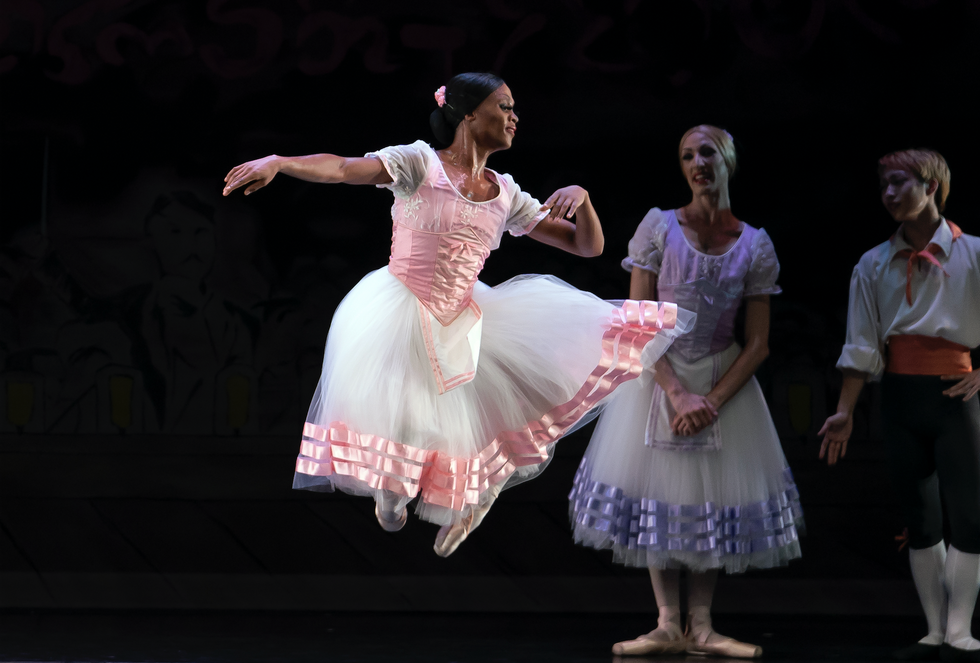
Observing Shabbat in Drag: Boysie Dikobe
On almost any given Friday night, you can find Les Ballets Trockadero de Monte Carlo dancer Boysie Dikobe sitting in front of a dressing-room mirror, applying full drag makeup, and davening (praying) for Shabbat. “I walk around with a kippah [yarmulke] and long eyelashes on,” he says. “People look at me like I’m crazy, but I have to do it because it works for me and it’s meditative.”
After he finishes his evening performances with the prestigious all-male comedic ballet company, Dikobe makes his way to his hotel, where he stays up late to watch the livestream of Shabbat.
Although he was raised in a Methodist home, Dikobe spent a great deal of time with his Jewish dance friends in northwest South Africa. He’s felt drawn to Judaism since he was 10 years old, but he believed he was too young to choose a religion at that time.
So he opted to develop his personal spirituality instead—until 2012, when he was on tour with the Trocks in Israel, and spent some time at the Western Wall. “I felt such a strong connection there,” Dikobe says. “I instantly started bawling my eyes out. It was something I couldn’t understand, but I knew it made me feel so grounded. I felt I needed to start looking into the religion seriously.”
Earlier this fall, Dikobe completed his Conservative conversion—something he says dance really prepared him for. “Dance gave me discipline, which helped me be committed to my conversion,” he says. “Last year I was performing two shows during Yom Kippur. I had to fast for 25 hours, and I really did it—not a drop of water. I had a headache at the end of it all. But I didn’t have time to think about food, really, because I was focused on dancing. I got to really understand the point of the whole thing.”
For Dikobe, religion has given him perspective on ballet, life and his personal future. “At 21, I gave everything to ballet,” he says. “But then I injured my hip and I realized I didn’t have any balance in my life—something was missing. Religion has filled that void for me. Now I realize that if ballet were taken away from me, I would still be whole. I can pray. I can be safe without anything external.”
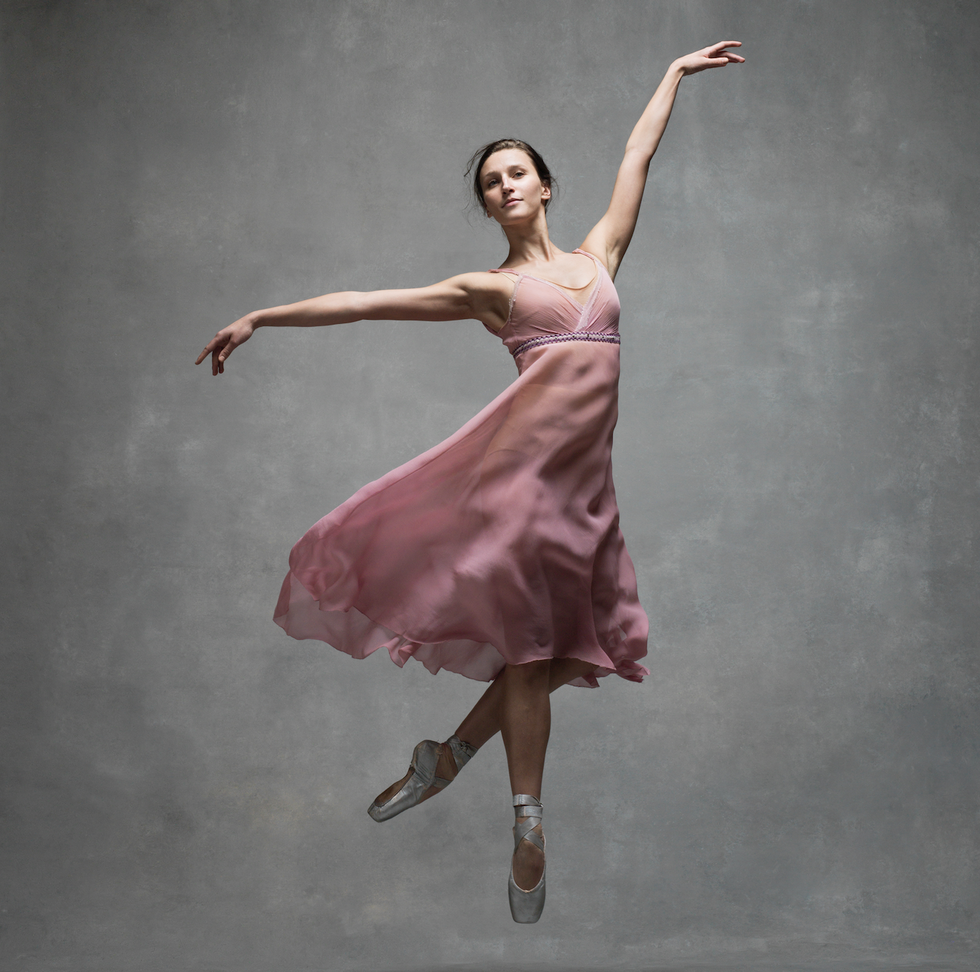
The Constant Reach for Perfection: Devon Teuscher
“My faith gives me perspective,” says American Ballet Theatre principal Devon Teuscher of her lifelong membership of The Church of Jesus Christ of Latter-day Saints. “It’s kept me grounded in times of worry in my career. Latter-day Saint doctrine supports the belief in an afterlife, which really helps me see how small each moment is. I’ve come to learn that there is more than just ballet.”
Beyond giving her peace, Teuscher has found commonalities in lifestyle and ideology between dance and religion that have allowed her to find growth in both.
“I believe that God gave us our talents, and that he wants us to develop them,” Teuscher says. “There is a lot of discipline that goes into being a practicing religious person, just as there is a lot of discipline that goes into being a professional ballet dancer. Ballet requires reverence, and my faith has taught me how to be reverent—the two go hand in hand.”
But the link that strikes Teuscher most is their common goal of ultimate perfection. “In church I learn that I will never be perfect on my own,” she says. “There is a constant leveling-up in both of these worlds. I am never settling; I am always working to improve both my faith and my dancing.”
Just as religion informs Teuscher’s professional career, dance has also had a profound impact on the way she approaches religion. “I think dance has opened me up to a larger understanding of love,” she says. “The people I relate to at work each day are so different than me. They come from different walks of life and have different perspectives than my own. I have had the opportunity to open my heart to those who may think differently than I do, and as a result I have become more open-minded, more kind and more loving.”
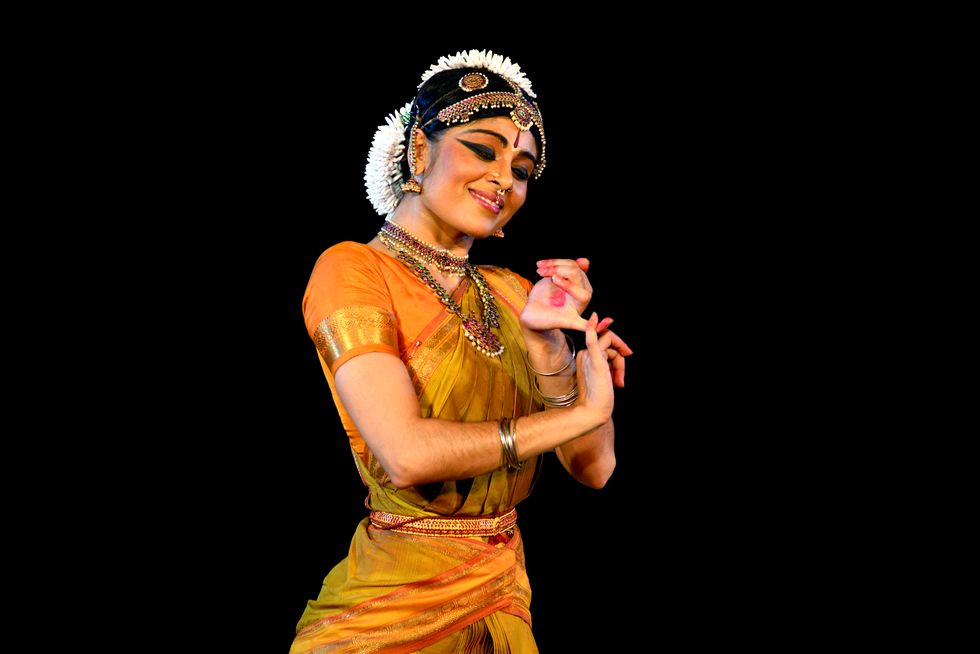
Using Dance to Share Hindu Myths: Ashwini Ramaswamy
For Ashwini Ramaswamy, a bharatanatyam dancer who performs with Ragamala Dance Company in Minneapolis, her career isn’t merely supported by her Hindu faith—it’s the vessel through which she worships. “This dance form started in South Indian temples several thousand years ago and is completely connected to Hinduism,” says Ramaswamy, who has studied bharatanatyam with her mother and sister since she was 5 years old. “According to mythology, dance was created by the gods for the enjoyment of people, and became a vehicle to express Hindu myths. When I dance, it’s a prayer I give with my entire body.”
Yet Ramaswamy tries to steer clear of using the word “religion” when speaking of her work. “I worry that it can be an alienating word,” she says. “I like to think of our dancing as an expression of spirituality. You don’t have to be Hindu to appreciate or even dance bharatanatyam.”
Still, Ramaswamy says both her faith and her dancing connect her to a greater purpose. “In India there is a belief called Bhava and Rasa—it means there is a completely symbiotic relationship between artist and audience,” she says. “The dancer gives and the audience receives and gives back. This reminds me of the flow of energy in Hinduism that connects all beings. The idea that I’m part of this continuum of spirituality that connects all the practitioners who came before is extremely gratifying.”
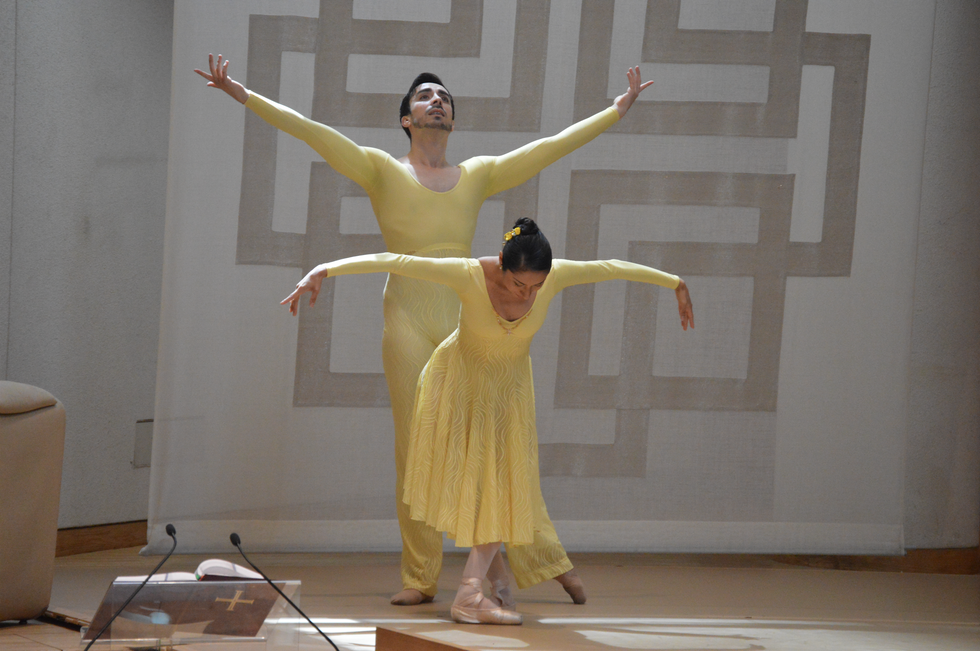
Embodying Scripture: Roberto Lara
Since joining the congregation at St. Peter’s Church in New York City, New York Baroque Dance Company member Roberto Lara has been inspired to explore liturgy through dance. After speaking with church leadership, he was asked to create what they’ve called a Dance Ministry.
As the artistic director for the church-funded group since January 2012, he creates liturgical works that share stories from scripture. “We tell many stories through dance, including a performance about the nativity at Christmas time, and the energy of the Holy Spirit coming out of us at Pentecost,” he says. “Can you think of a better way to depict that than through dancing?”
According to Lara, performing in a liturgical setting is very different from performing in a theater. “The audience is so open to receiving the message, it’s a truly powerful experience,” he says. Lara works in collaboration with the church’s senior pastor to make sure the message of their performances reflects true Lutheran theology.
As a seasoned professional dancer (his past credits also include six years as a Trocks dancer), Lara is aware of the somewhat amateur reputation liturgical dance can have. He has chosen to push past the stigma to create a group that puts on truly professional performances.
“I have been able to find incredible performers who are willing to explore dance in this setting,” he says. Some of the artists who have been involved include former ABT soloist Ruth Mayer and the artistic director of The New York Baroque Dance Company, Catherine Turocy.
“My entire professional career has prepared me for this moment,” Lara says. “This is a way for me to combine my two passions. I have a very personal relationship with God and liturgy, and am passionate about my dance career. It’s a gift to get to use my talents to share my faith.”
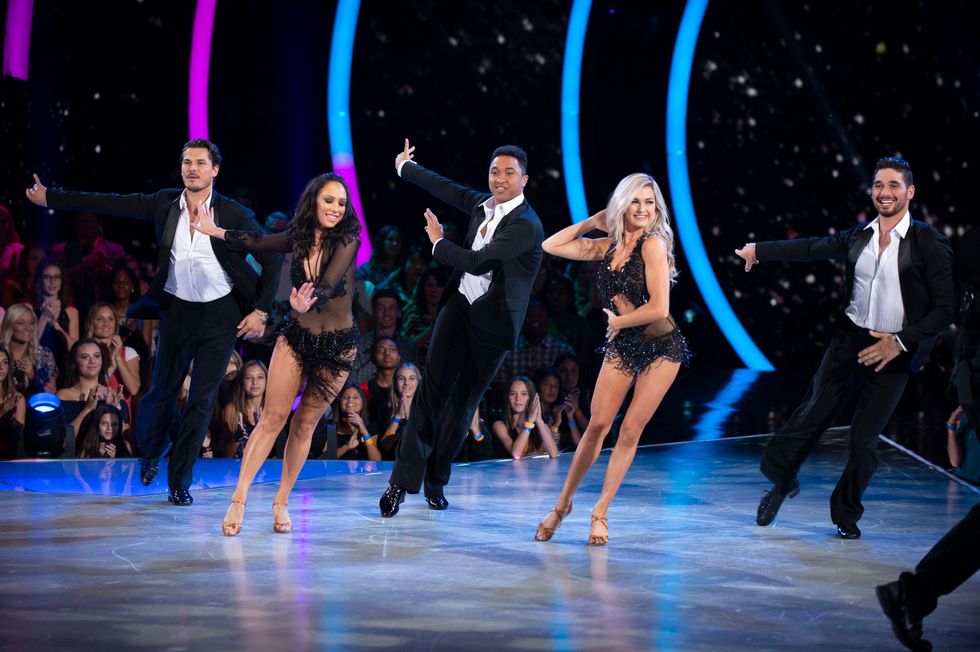
ABC/Eric McCandless, Courtesy ABC
Living Her Faith: Lindsay Arnold Cusick
When Cusick left her predominantly Latter-day Saint hometown studio in Utah to pursue a professional ballroom career in Los Angeles, she was in for a bit of a wake-up call.
“I went from living in a place where everyone shared my values to being thrown into a world where that wasn’t necessarily the case,” Cusick says. “It was a challenge at first, but it ended up being better for my testimony than anything else could have been. I realized that the values that I have are right for me.”
While her dance career has increased her desire to live her faith, it has also taught her to have respect for the beliefs of others. “I have seen so many people living awesome, beautiful lives that are really different than mine. I have friends from all different religions, and we appreciate and respect each other.”
As each season of “DWTS” ends, Cusick heads out on tour for one final victory lap with her fellow cast members. In this setting, her preshow ritual has one small difference: Cusick trades in her usual private prayer for a large, multi-faith blessing with some of her fellow professionals. “We come from different religions,” she says, “but prayer is something most of us share.”



